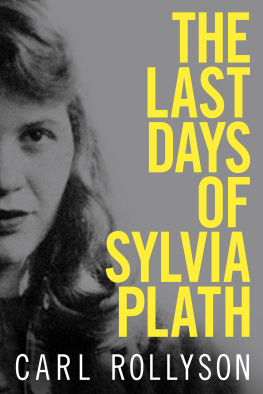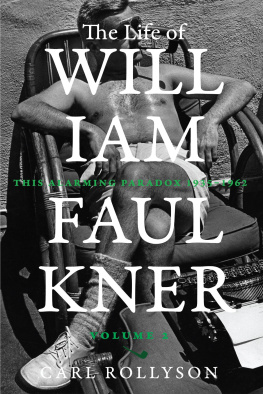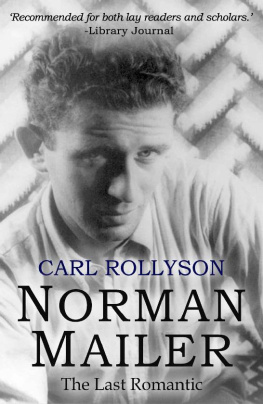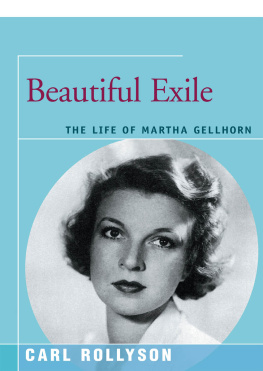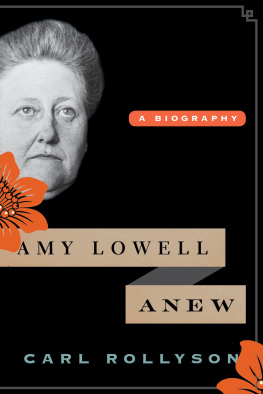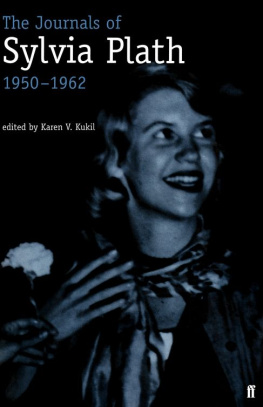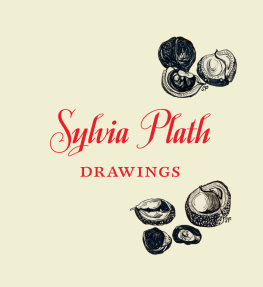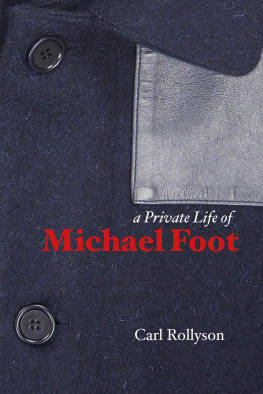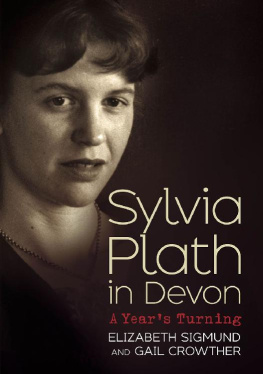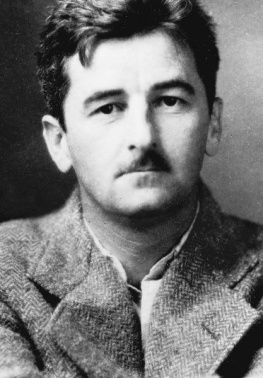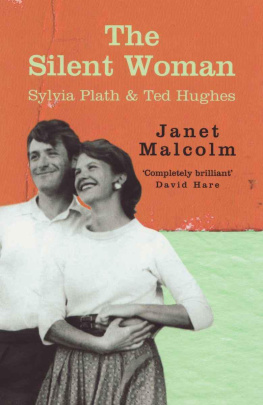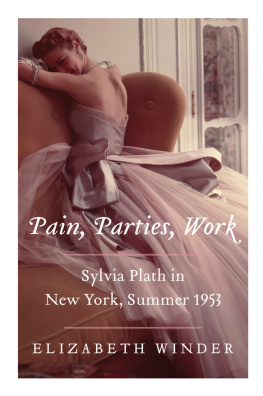Carl Rollyson - The Last Days of Sylvia Plath
Here you can read online Carl Rollyson - The Last Days of Sylvia Plath full text of the book (entire story) in english for free. Download pdf and epub, get meaning, cover and reviews about this ebook. year: 2020, publisher: University Press of Mississippi, genre: Science. Description of the work, (preface) as well as reviews are available. Best literature library LitArk.com created for fans of good reading and offers a wide selection of genres:
Romance novel
Science fiction
Adventure
Detective
Science
History
Home and family
Prose
Art
Politics
Computer
Non-fiction
Religion
Business
Children
Humor
Choose a favorite category and find really read worthwhile books. Enjoy immersion in the world of imagination, feel the emotions of the characters or learn something new for yourself, make an fascinating discovery.
- Book:The Last Days of Sylvia Plath
- Author:
- Publisher:University Press of Mississippi
- Genre:
- Year:2020
- Rating:3 / 5
- Favourites:Add to favourites
- Your mark:
- 60
- 1
- 2
- 3
- 4
- 5
The Last Days of Sylvia Plath: summary, description and annotation
We offer to read an annotation, description, summary or preface (depends on what the author of the book "The Last Days of Sylvia Plath" wrote himself). If you haven't found the necessary information about the book — write in the comments, we will try to find it.
The Last Days of Sylvia Plath — read online for free the complete book (whole text) full work
Below is the text of the book, divided by pages. System saving the place of the last page read, allows you to conveniently read the book "The Last Days of Sylvia Plath" online for free, without having to search again every time where you left off. Put a bookmark, and you can go to the page where you finished reading at any time.
Font size:
Interval:
Bookmark:

THE LAST DAYS OF SYLVIA PLATH
THE LAST DAYS OF SYLVIA PLATH
CARL ROLLYSON
UNIVERSITY PRESS OF MISSISSIPPI / JACKSON
The University Press of Mississippi is the scholarly publishing agency of the Mississippi Institutions of Higher Learning: Alcorn State University, Delta State University, Jackson State University, Mississippi State University, Mississippi University for Women, Mississippi Valley State University, University of Mississippi, and University of Southern Mississippi.
www.upress.state.ms.us
The University Press of Mississippi is a member of the Association of University Presses.
Copyright 2020 by Carl Rollyson
All rights reserved
Manufactured in the United States of America
First printing 2020
Library of Congress Cataloging-in-Publication Data available
LCCN 2019049567
ISBN 9781496821225 (hardback)
ISBN 9781496826879 (epub single)
ISBN 9781496826886 (epub institutional)
ISBN 9781496826893 (pdf single)
ISBN 9781496826909 (pdf institutional)
British Library Cataloging-in-Publication Data available
Does Shelley go on telling strange Stories of the Death of Kings? Tell him there are strange Stories of the death of Poets.
John Keats
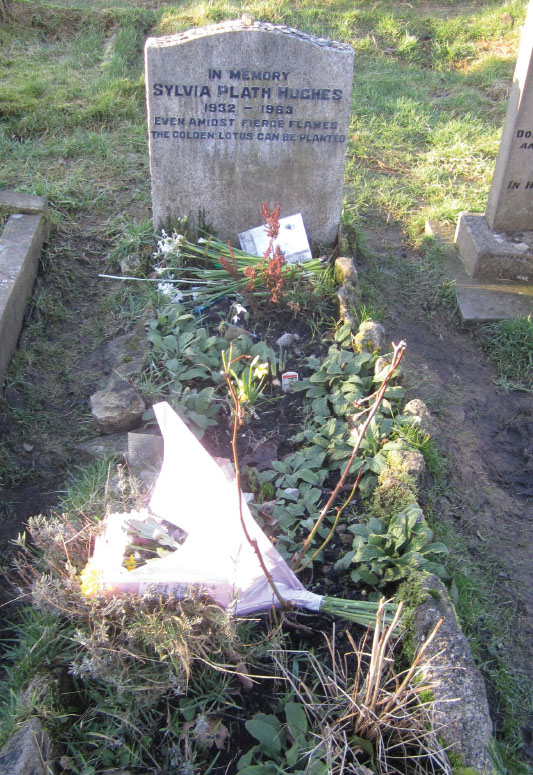
Courtesy Peter K. Steinberg
CONTENTS
PREFACE
I arrived in London about four months after Sylvia Plath ended her life on February 11, 1963. I was fifteen years old, part of a group of Shakespearean players who would tour the country for three weeks. I thought it was my destiny to be there when I encountered the actor James Mason in the Tower of London. As brash as Sylvia, I accosted Mason, whose films I had seen on televisions Million Dollar Movie, and said, Im an actor too. He wanted to see me act, but alas the tour had just ended. This was the first of over forty trips to the United Kingdom during the next fifty years to holiday and to do research for my biographies of Rebecca West, Martha Gellhorn, Amy Lowell, Jill Craigie, Michael Foot, and Sylvia Plath. Like Plath, I came from a suburban middle class upbringing and was startled on my first overseas trip at the state of postwar Britain still in recovery. I remember the narrow city streets, the long rows of uniform dwellings, and in Yorkshire the stunning sooty look of an old woolen mill. I noticed all the black piping outside of the housing, the plumbing that froze up during Plaths last fatal coal-blackened English winter.
I met an English girl in Sheffield and corresponded with her for years. The idea of a pen pal, so important to Plath in letters to a German boy, also powered my adolescence, and like her I lost my father at an early age and wanted an audience. On that first trip to England I had never heard of Sylvia Plath. Later it seemed only a matter of time until I wrote her life, published as American Isis: The Life and Art of Sylvia Plath on the fiftieth anniversary of her death in 2013.
Actually my subtitle for the biography had been The Life and Death of Sylvia Plath. But my editor said, Oh no, that is so depressing. As if it would come as a surprise that she had committed suicide. But I deferred to his judgment, bolstered by the marketers who rule publishing. Even so, I continued to think about her death and how it should be understood. The recent publication of her lettersall that have been found so farthe partial opening of her psychiatrists papers, other new archival material, and the encouragement of my agent, Philip Turner, stimulated an irresistible desire to explore once again what happened to Sylvia Plath, especially what had occurred in the England of the 1960s that had done so much to forge my own identity.
In The Art of Biography, Paul Murray Kendall argues that every biography is also an autobiography. Im not sure that is true for every biographer, but it is for me. I am one of those biographers, and perhaps all biographers are like this: believing that something in them is especially suited to their subject. This consanguinity may be an illusion, but it may also be one of those fictions out of which certain truths emerge.
INTRODUCTION
I begin this book with a chronology because I do not always observe in the narrative the kind of chronological decorum expected of most biographies. Readers less familiar with the sequence of events in Plaths life may find it helpful to understand the order of time before attempting to master the back-and-forth of my numbered sections. The purpose of my digressions and disruptions is to come at the same events and issues from different angles, flashing backward and forward, in different voices. The last days of Sylvia Plath play out in a zigzag pattern that cannot be straightened out without simplifying the intricacy of her existence. Her story remains unresolved, and something of a mystery that I do not want to wrap up neatly.
In a sentence, I would say this book is an effort to show why Plaths suicide is not only an individual act but also a concatenation of forces and circumstances in which concepts like free will and mental illness are factors but not determinants of what happened to her and what she did to herself. The reductive temptations to moralize and medicalize suicide are to be resisted, even though the etiology of suicide has to be explored. In other words, Sylvia Plaths last daystheir shape and trajectorywere not inevitable.
Each section of this book is a new beginning that I have decided not to signpost with a title. The numbered episodic sections reflect my surprise and discovery at where Plaths days have taken me. I wrote this book with a sense of suspense, which I hope the reader feels as well. To string out her life along one chronological line can provide valuable insights. Ive done it myself. But there is another way, which implies that the last days of Sylvia Plath are not over, which is why the last two sections of this book deal with those who tried to cope with her last days, which we have to return to, again and again, to discover what we missed and to point out clues that yet others will pick up and put together in yet another configuration of her biography.
CHRONOLOGY
CHILDHOOD AND YOUTH
17 August 1930: Ted Hughes is born in Mytholmroyd, West Yorkshire.
27 October 1932: Sylvia Plath is born in Boston and lives with her parents in Jamaica Plain, Massachusetts, until they move to Winthrop, Massachusetts, in 1936; 1934: Otto Plath publishes Bumblebees and Their Ways, a landmark study in entomology; 27 April 1935: Warren is born; 21 September 1938: The great New England hurricane; February 1940:Superman begins a decade-long run on radio, and Sylvia Plath is an avid listener; 5 November 1940: Otto Plath dies of an embolism after an amputation; 10 August 1941: Sylvias first poem is published in the Boston Herald; 7 December: The United States enters World War II; 1942: Aurelia Plath moves her family to Wellesley and begins teaching at Boston University; 1944: Sylvia begins keeping a journal and writes for her junior high school literary magazine, The Philippian; 20 January 1945: Sylvia and her mother attend a performance of The Tempest in Boston; 6, 9 August: Atomic bombs are dropped on Japan; 194950: Sylvia coedits the school newspaper, The Bradford, during her last year of high school; 1950: Sylvia is accepted as a scholarship student at Smith College, Northampton, Massachusetts, and lives on campus in Haven House;
Next pageFont size:
Interval:
Bookmark:
Similar books «The Last Days of Sylvia Plath»
Look at similar books to The Last Days of Sylvia Plath. We have selected literature similar in name and meaning in the hope of providing readers with more options to find new, interesting, not yet read works.
Discussion, reviews of the book The Last Days of Sylvia Plath and just readers' own opinions. Leave your comments, write what you think about the work, its meaning or the main characters. Specify what exactly you liked and what you didn't like, and why you think so.

